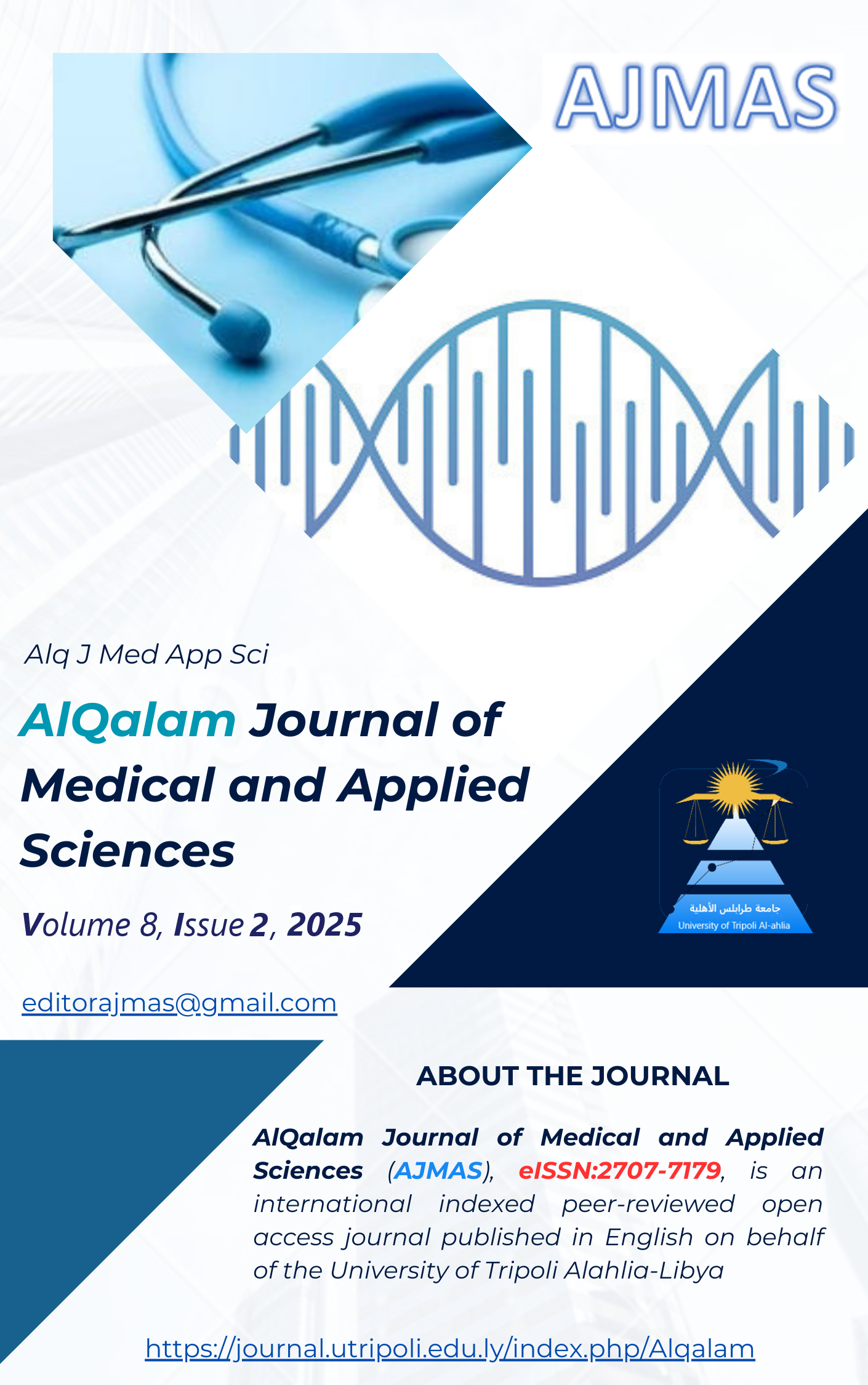Impacted Canines: A Retrospective Study of the Prevalence, Causes, Diagnosis, and Management with Open and Closed Surgical Approach
DOI:
https://doi.org/10.54361/ajmas.258272Keywords:
Canine Impaction, Prevalence Impacted Canines, Maxilla, Bilateral, UnilateralAbstract
Impaction is a tooth that fails to erupt into its normal functioning position in the dental arch within the expected time and will not attain its anatomical position beyond the chronological eruption data, even after its root completion. When maxillary impacted canines (MxIC) and mandibular impacted canines (MnIC) are impacted, they can present significant functional and esthetic dilemmas to the patient and clinician. This study was designed to evaluate the prevalence, causes, diagnosis, and management of maxillary canines using two different surgical approaches: open and closed surgical exposure. The sample consists of 310 patients, 264 females and 46 males, among them 11 cases were subject to a comparative study to evaluate the difference between the closed and open surgical approach on different clinical parameters. This paper described the development, incidence, etiology, and diagnosis of the impacted canine. This article discussed the techniques that can be used in guiding the direction or altering the direction of impacted canines to bring them into occlusion. It highlights the steps required for proper clinical and radiographic examinations and surgical intervention selection based on the literature available. A cross-sectional retrospective study of all patients who attended Almadane dental clinic in Caser Ben Gashier and the Libyan Academic Dental Center in Tripoli, Libya. Inclusion criteria were individuals aged 15 years and older and no history of orthodontic treatment. The data were collected from the routine medico-legal orthodontic records. All OPGs were taken using standardized equipment. Data were explored for frequency and pattern of canine impaction in regards to gender difference, anatomical position difference. A total of 310 individuals fulfilled the inclusion criteria with a mean age of 18 ± 13.5 years. Of the total sample, 25 individuals had at least one maxillary and /or mandibular canine impaction, Canine impaction occurs more in females than males, 5:1%. In this sample, the frequency of MxIC was 8% and MnIC was 2.9%. The (MxIC) occurred in 8% of the sample, bilateral (MxIC) occurred in 4%, and Unilateral (MxIC) occurred in 3.9%. Unilateral canine impaction on the right side was 0.9%, and 2.5% Unilateral (MxIC) left side. The location of the (MxIC) was 4.8 % palatally and 3.5% buccally. while mandibular canine impaction occurred in 2.9 % of the cases, bilateral (MnIC) was 0.9%, unilateral (MnIC) on right side was 0.6%, and 0.9% was unilateral (MnIC) on the left side. (MnIC) buccally located was 1.9%, and 0.9% was located lingually. Eleven cases were subject to a comparative study to evaluate the difference between the closed and open surgical approach on different clinical parameters, and the result showed no clinically significant difference between the open and closed surgical approach. The maxillary canines have the longest period of development, as well as the longest and most tortuous course to travel from the point of formation, lateral to the piriform fossa, until they reach their final destination in full occlusion, when canines are impacted, they can present significant functional and esthetic dilemmas to the patient and clinician. Therefore, proper management of impacted teeth is important to achieve long-term success, functionally and esthetically.
Downloads
Published
How to Cite
Issue
Section
License
Copyright (c) 2025 Fathi Almadane, Nadia Eddib, Ahmed Almadane

This work is licensed under a Creative Commons Attribution 4.0 International License.















